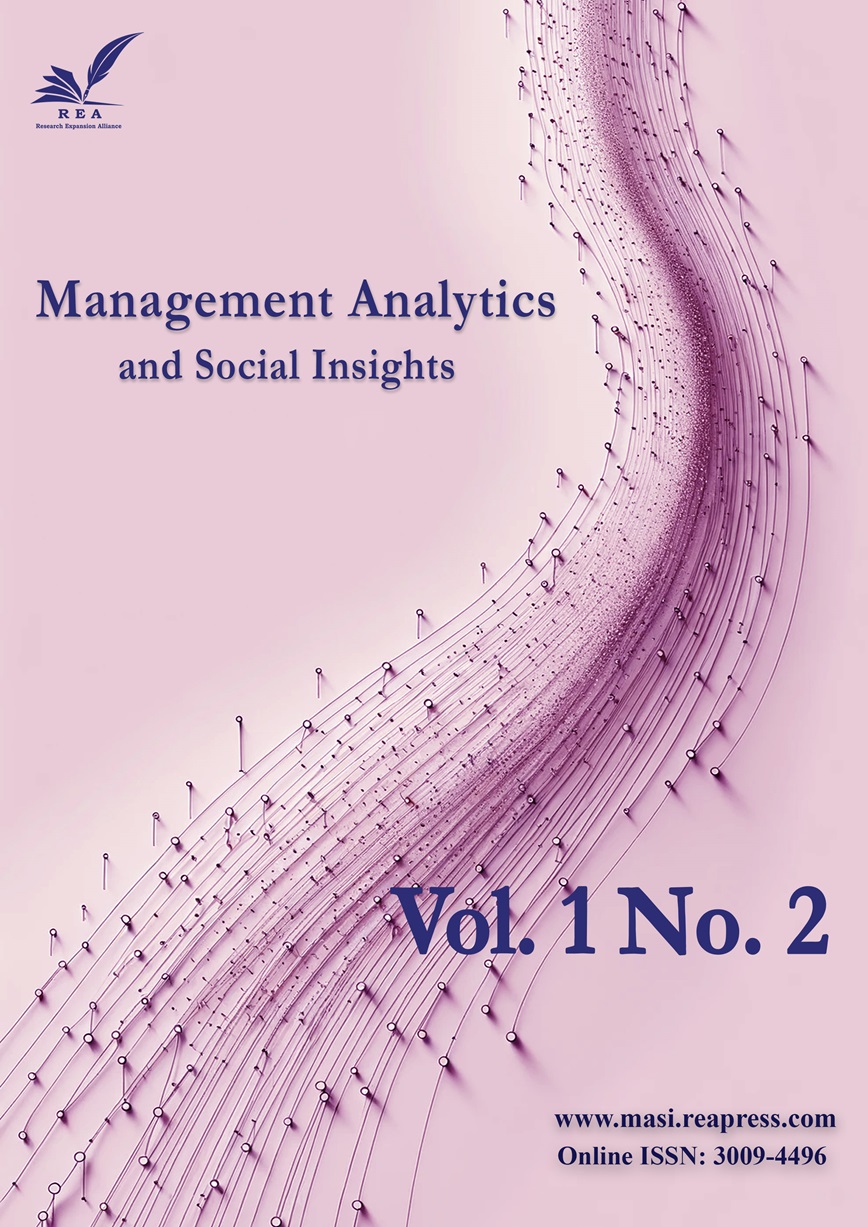Critical Analysis of Phenomenological Research Design in a Qualitative Research Method
Abstract
The research method and design have close relationships and are contained in each other. This study critically analyses phenomenological research design in a qualitative research method, intending to expose scholars in management, humanities, business, and social sciences to the dynamics of qualitative research methods and phenomenological research design, especially when conducting phenomenological research. A qualitative phenomenological research design is used to describe previous and present experiences of participants. This study further explains the research design, data collection methods, sample size, data analysis techniques, and roles of researcher, among other areas within the qualitative phenomenological research design, such that the outcome of qualitative phenomenological research will be credible, trustworthy, and dependable.
Keywords:
Phenomenology, Research design, Research method, Qualitative researchReferences
- [1] Adeniran, A. (2018). Establishing chi square as a non-parametric test in descriptive statistics. Science & technology, 4, 106–113. https://encr.pw/4wV8B
- [2] Wagner, W. E., & Zaino, J. (2018). Adventures in social research: data analysis using IBM SPSS statistics (10th ed.). SAGE publications. https://books.google.com/books?id=NtE_DwAAQBAJ
- [3] Skidmore, Shalonda., Kowalczyk, Devin., Scalia, S. (2020). Definition, purpose & types. Psychology 105: research methods in psychology. https://study.com/academy/lesson/what-is-research-definition-purpose-typical-researchers.html
- [4] University of Newcastle library guides. (2020). Research methods: what are research methods? https://libguides.newcastle.edu.au/researchmethods
- [5] Shona, M. (2020). An introduction to research methods. SCRIBBR. https://www.scribbr.com/category/methodology/
- [6] Yin, R. K. (2017). Case study research and applications: design and methods (6th ed.). Sage publications. https://books.google.com/books?id=6DwmDwAAQBAJ&printsec=frontcover&source=gbs_ge_summary_r&cad=0#v=onepage&q&f=false
- [7] Creswell, J. W., & Poth, C. N. (2017). Qualitative inquiry and research design: choosing among five approaches (4th ed.). Sage publications. https://books.google.com/books/about/Qualitative_Inquiry_and_Research_Design.html?id=Pz5RvgAACAAJ
- [8] Vamsi Krishna Jasti, N., & Kodali, R. (2014). A literature review of empirical research methodology in lean manufacturing. International journal of operations & production management, 34(8), 1080–1122. DOI: 10.1108/IJOPM-04-2012-0169
- [9] Stone, D. N., & Miller, T. C. (2012). The state of, and prospects for, forensic and fraud research that matters. Journal of forensic & investigative accounting, 4(2), 35–76. http://web.nacva.com/JFIA/Issues/JFIA-2012-2_2.pdf
- [10] Fetters, M. D., Curry, L. A., & Creswell, J. W. (2013). Achieving integration in mixed methods designs—principles and practices. Health services research, 48(6pt2), 2134–2156. DOI: 10.1111/1475-6773.12117
- [11] McCombes, S. (2019). How to create a research design. SCRIBBR. https://www.scribbr.com/research-process/research-design.
- [12] Vohra, V. (2014). Using the multiple case study design to decipher contextual leadership behaviors in Indian organizations. Electronic journal of business research methods, 12(1), 54-65. https://academic-publishing.org/index.php/ejbrm/article/view/1314
- [13] Brown, D. J., & Lord, R. G. (1999). The utility of experimental research in the study of transformational/charismatic leadership. The leadership quarterly, 10(4), 531–539. DOI: 10.1016/S1048-9843(99)00029-6
- [14] Keskinocak, P., & Tayur, S. (2001). Quantitative analysis for internet-enabled supply chains. Interfaces, 31(2), 70–89. DOI: 10.1287/inte.31.2.70.10626
- [15] Egan, T. M. (2005). Factors influencing individual creativity in the workplace: an examination of quantitative empirical research. Advances in developing human resources, 7(2), 160–181. DOI: 10.1177/1523422305274527
- [16] Creswell, J. W. (2003). Research design qualitative, quantitative and mixed methods approaches (2th ed.). Sage publications. https://encr.pw/7ERhH
- [17] Berríos, R., & Lucca, N. (2006). Qualitative methodology in counseling research: recent contributions and challenges for a new century. Journal of counseling & development, 84(2), 174–186. DOI: 10.1002/j.1556-6678.2006.tb00393.x
- [18] Rudkin, K. M., & Deo, H. N. (2006). Ethnographic methodology and its implications for banking studies. Journal of the american academy of business, Cambridge, 6(2), 20–25. https://ro.uow.edu.au/commpapers/1845/
- [19] Christensen, L. B., Johnson, R. B., & Turner, L. A. (2013). Research methods, design, and analysis (12. ed). https://dokumen.pub/research-methods-design-and-analysis-12-ed-global-ed-9780205961252-1292057742-9781292057743-0205961258.html
- [20] Gilmore, D. (2002). Understanding and overcoming resistance to ethnographic design research. Interactions, 9(3), 29–35. DOI: 10.1145/506671.506686
- [21] Goulding, C. (2005). Grounded theory, ethnography and phenomenology: a comparative analysis of three qualitative strategies for marketing research. European journal of marketing, 39(3/4), 294–308. DOI: 10.1108/03090560510581782
- [22] Herek, G. M., Janis, I. L., & Huth, P. (1987). Decision making during international crises: is quality of process related to outcome? Journal of conflict resolution, 31(2), 203–226. DOI: 10.1177/0022002787031002001
- [23] Selden, L. (2005). On grounded theory-with some malice. Journal of documentation, 61(1), 114–129. DOI: 10.1108/00220410510578041
- [24] Woodside, A. G., & Wilson, E. J. (2003). Case study research methods for theory building. Journal of business & industrial marketing, 18(6/7), 493–508. DOI: 10.1108/08858620310492374
- [25] Budd, J. M. (2005). Phenomenology and information studies. Journal of documentation, 61(1), 44–59. DOI: 10.1108/00220410510578005
- [26] Küpers, W. (2005). Phenomenology of embodied implicit and narrative knowing. Journal of knowledge management, 9(6), 114–133. DOI: 10.1108/13673270510630006
- [27] Nemati, S., Rassouli, M., Ilkhani, M., & Baghestani, A. R. (2018). Perceptions of family caregivers of cancer patients about the challenges of caregiving: a qualitative study. Scandinavian journal of caring sciences, 32(1), 309–316. DOI: 10.1111/scs.12463
- [28] Schumacher, L. A. (2010). The caregiver’s journey: a phenomenological study of the lived experience of leisure for caregivers in the sandwich generation who care for a parent with dementia. [Thesis]. DOI: 10.17077/etd.g638o927
- [29] Wehei, M. (2018). Self-care for the caregiver. Harvard health blog. https://www.health.harvard.edu/blog/self-care-for-the-caregiver-2018101715003#:~
- [30] Patton, M. Q. (2002). Qualitative research and evaluation methods. SAGE Publications. https://books.google.com/books/about/Qualitative_Research_Evaluation_Methods.html?id=FjBw2oi8El4C
- [31] Flick, U. (2014). An introduction to qualitative research (5th ed.). SAGE Publications. https://books.google.com/books?id=HB-VAgAAQBAJ
- [32] Palinkas, L. A., Horwitz, S. M., Green, C. A., Wisdom, J. P., Duan, N., & Hoagwood, K. (2015). Purposeful sampling for qualitative data collection and analysis in mixed method implementation research. Administration and policy in mental health and mental health services research, 42, 533–544. DOI: 10.1007/s10488-013-0528-y
- [33] Tongco, M. D. C. (2007). Purposive sampling as a tool for informant selection. Ethnobotany research & applications, 5, 147–158. DOI: 10125/227
- [34] Rubin, H. J., & Rubin, I. S. (2005). Qualitative interviewing: the art of hearing data (2nd ed.). SAGE Publications. DOI: 10.4135/9781452226651
- [35] Merriam, S. B., & Tisdell, E. J. (2015). Qualitative research: a guide to design and implementation (2nd ed.). John Wiley & Sons. https://acesse.dev/wFb0B
- [36] Vitaliano, P. P., Zhang, J., & Scanlan, J. M. (2003). Is caregiving hazardous to one’s physical health? A meta-analysis. Psychological bulletin, 129(6), 946–972. DOI: 10.1037/0033-2909.129.6.946
- [37] Sutton, J., & Austin, Z. (2015). Qualitative research: data collection, analysis, and management. The canadian journal of hospital pharmacy, 68(3), 226–231. DOI: 10.4212/cjhp.v68i3.1456
- [38] Stahl, N. A., & King, J. R. (2020). Expanding approaches for research: Understanding and using trustworthiness in qualitative research. Journal of developmental education, 44(1), 26–28. https://www.jstor.org/stable/45381095
- [39] Crowe, M., & Sheppard, L. (2011). A review of critical appraisal tools show they lack rigor: alternative tool structure is proposed. Journal of clinical epidemiology, 64(1), 79–89. DOI: 10.1016/j.jclinepi.2010.02.008
- [40] Stenfors, T., Kajamaa, A., & Bennett, D. (2020). How to… assess the quality of qualitative research. The clinical teacher, 17(6), 596–599. DOI: 10.1111/tct.13242
- [41] Bialon, L. N., & Coke, S. (2012). A study on caregiver burden: stressors, challenges, and possible solutions. American journal of hospice and palliative medicine, 29(3), 210–218. DOI: 10.1177/1049909111416494
- [42] Lincoln, Y. S., & Guba, E. G. (1985). Naturalistic inquiry. SAGE publications. https://books.google.com/books?id=2oA9aWlNeooC


